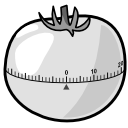
In Scrum, you develop product increments in short iterations called sprints. The sprint is a very central concept in Scrum: everything revolves around it.
In this post I talk about sprint length, preconditions for a successful sprint, and what to do when a sprint falters.
Each sprint starts with a planning event which I covered in an earlier post. The sprint ends with two other meetings: the sprint review and the sprint retrospective. Those will be covered later. These three events are part of the sprint, and make out the sprint boundaries.



 Last time I wrote about
Last time I wrote about 
 “Time is what we want most, but what we use worst.” –William Penn.
“Time is what we want most, but what we use worst.” –William Penn.
 A common reason for disagreements is differing definitions. I once had a discussion with a friend about egoism and people’s ability to do truly altruistic acts. After an hour though, we suddenly couldn’t agree more. That was when we decided to define egoism.
A common reason for disagreements is differing definitions. I once had a discussion with a friend about egoism and people’s ability to do truly altruistic acts. After an hour though, we suddenly couldn’t agree more. That was when we decided to define egoism.

 To use Scrum, you arguably need to apply it wholly. However, some practices are not unique to Scrum: practices all teams can benefit from.
To use Scrum, you arguably need to apply it wholly. However, some practices are not unique to Scrum: practices all teams can benefit from. Zen values simplicity, so does agile development. Zen means introspection, a key component of Scrum as well. Additionally, Zen is the attainment of enlightenment: very similar to the feeling when you first get agile.
Zen values simplicity, so does agile development. Zen means introspection, a key component of Scrum as well. Additionally, Zen is the attainment of enlightenment: very similar to the feeling when you first get agile.
 People might not like the idea of Scrum for many reasons. Three types of teams that don’t Scrum though they might have heard of it are:
People might not like the idea of Scrum for many reasons. Three types of teams that don’t Scrum though they might have heard of it are:
 In six posts, I have written about agile roadblocks: obstructions for implementing agile processes. The time has come to conclude the series with a summary and a couple of final words.
In six posts, I have written about agile roadblocks: obstructions for implementing agile processes. The time has come to conclude the series with a summary and a couple of final words. This is the third post in a series about applying the Pomodoro Technique® to Scrum and for development.
This is the third post in a series about applying the Pomodoro Technique® to Scrum and for development.
